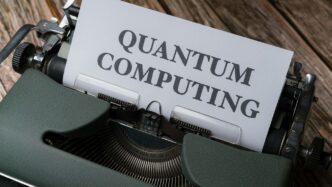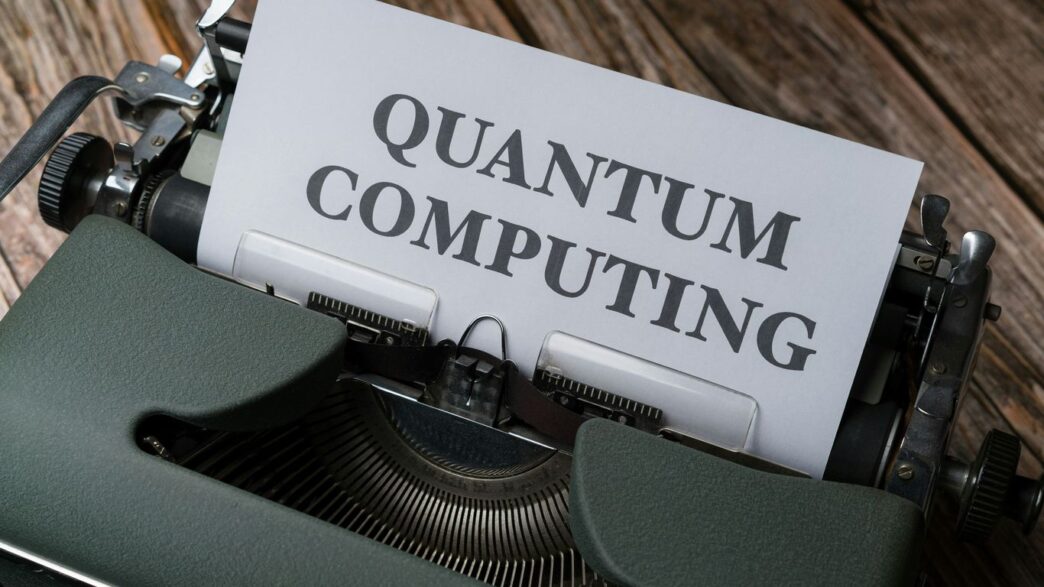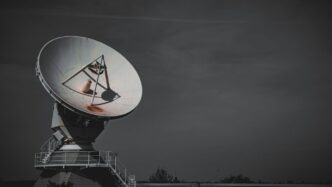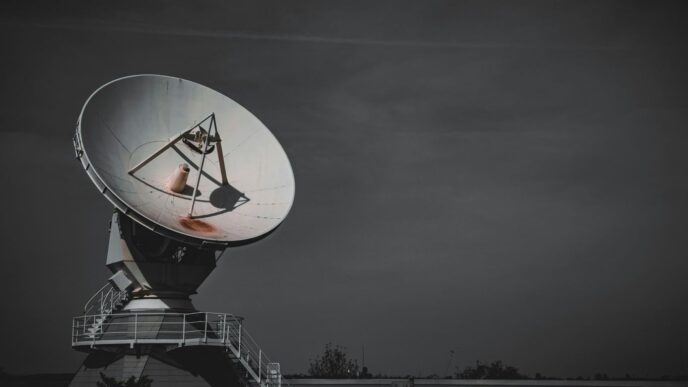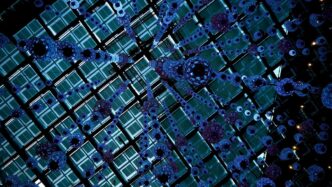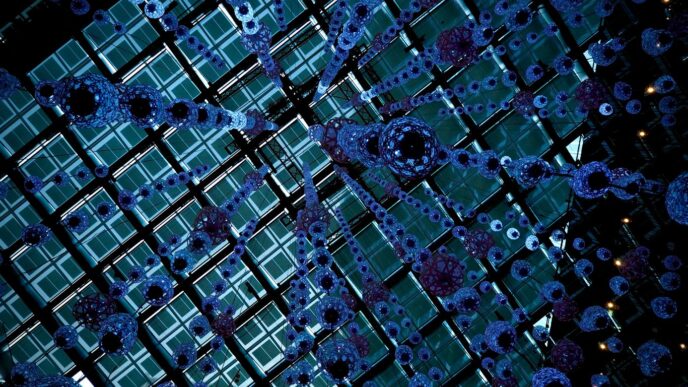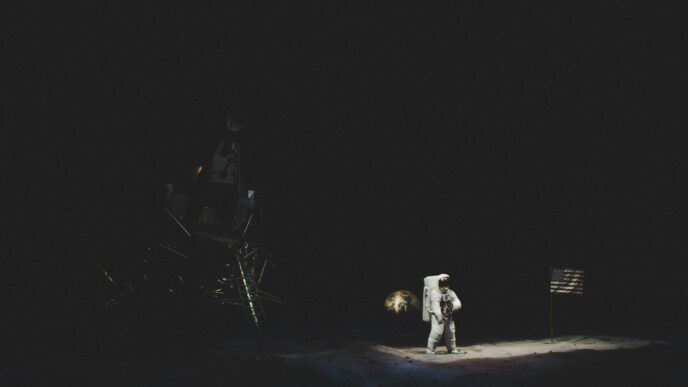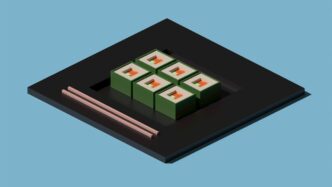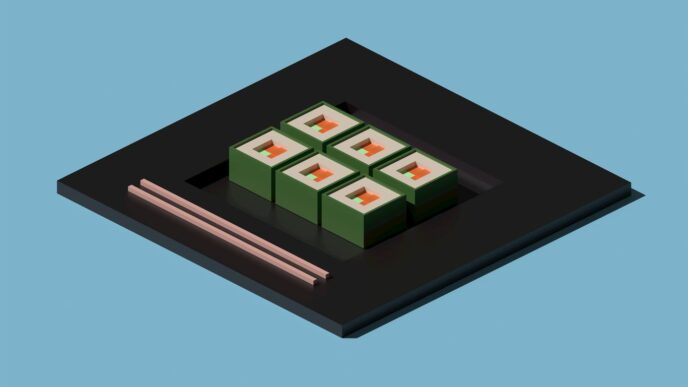Space exploration is changing fast, and NASA quantum computer research is a big part of that shift. Instead of using only regular computers, NASA is now looking at quantum computers to solve problems that used to take forever or seemed impossible. From planning missions to keeping data safe, quantum technology is popping up everywhere. It still has a long way to go, but the things NASA is working on could change how we explore space for good. Here’s what you should know about how NASA quantum computer research is shaping the future of space exploration.
Key Takeaways
- NASA quantum computer research is helping plan space missions more efficiently, from plotting spacecraft routes to using less fuel.
- Quantum computers are making it possible to process huge amounts of space data, like telescope images and sensor readings, much faster than before.
- Keeping communication secure between Earth and satellites is getting easier with quantum encryption and key distribution.
- Navigation in deep space is improving as NASA tries out quantum-enhanced GPS and sensors that work beyond Earth’s orbit.
- Designing new spacecraft and materials is speeding up since quantum simulations let engineers test ideas quickly without building expensive prototypes.
NASA Quantum Computer Innovation in Mission Planning

NASA isn’t just thinking about rockets anymore—they’re thinking about how quantum computers could change everything about planning missions. We’re talking about reworking the very basics of how rockets get from A to B and making every ounce of fuel count. Let’s break down what’s happening, section by section.
Quantum Algorithms for Space Trajectories
You might not realize how complicated plotting a course through space is—gravity from planets, the pull from the sun, and all sorts of weird physics come into play. Quantum algorithms manage to plow through these calculations, finding new paths regular computers just can’t crack. NASA’s Ames Research Center, for example, has put resources into creating algorithms that crunch these numbers a lot faster.
Some real-world impacts:
- Shorter routes mean less time in space, which makes missions safer.
- Reduced travel time equals less exposure to cosmic radiation for astronauts.
- Potential to reroute spacecraft mid-mission as new data comes in, opening up flexibility we just didn’t have before.
By working with quantum models and companies outside of NASA, like Google, they’re opening up new problem-solving angles for mission plans nobody thought possible even a decade ago.
Fuel Optimization with Quantum Annealing
Fuel isn’t just expensive—it’s basically the real currency of space travel. Quantum annealing is a way to pick the most efficient burn sequence, so spacecraft use every bit of propellant wisely.
Here’s a simple look at how it changes things:
| Approach | Time to Solution | Fuel Savings | Flexibility |
|---|---|---|---|
| Classical Optimization | Hours/Days | Low | Rigid |
| Quantum Annealing | Minutes | Significant | Adaptive |
This shift doesn’t just save money. It lets teams test out different routes and plans fast, without waiting ages for results. Suddenly, trade-offs between payload, travel time, and backup plans actually make sense at the planning table.
Streamlining Spacecraft Scheduling
Coordinating equipment, humans, launch windows, and objectives—space mission scheduling has layers upon layers. Quantum computing has the knack for sorting through options and finding the best lineup in a snap.
Here’s how quantum scheduling shakes things up:
- Cuts down on wasted resources by balancing crew shifts and robotic task times efficiently.
- Adjusts schedules quickly if weather shifts or equipment needs change at the last second.
- Handles conflicts in launch pads or communication network times almost instantly.
It might sound simple, but traditional methods get swamped as soon as you add more variables. With quantum scheduling, NASA finds better matches and can keep missions on track no matter how complicated things get. There’s a reason aerospace is investing more in these solutions—quantum algorithms for mission planning are really changing the playbook for how we head to space.
Enhancing Space Imaging and Data Analysis with NASA Quantum Computer Research
NASA’s experiments with quantum computing are opening up a whole new chapter for space imaging and how data from the cosmos is handled. It’s kind of wild how much stuff these missions send back—terabytes upon terabytes pour in from telescopes and satellites, and making sense of it all is becoming a serious marathon for normal computers. Here’s how quantum tech is changing the process:
Quantum-Powered Space Telescopes
Quantum computers are letting engineers design telescopes that can spot fainter and more distant objects than ever before. With quantum algorithms, scientists can fine-tune optical systems and cut down noise in ways standard algorithms just can’t match. There’s talk of future telescopes using quantum-enhanced sensors. That means:
- Better clarity when peering billions of light-years away
- More precise measurements of weird cosmic events
- New types of data to analyze that would otherwise be lost in the static
Improved Astronomical Image Processing
Sorting out images from space is kind of like un-jumbling an old, fuzzy TV broadcast. Quantum computers speed this up by quickly crunching through massive calculations that would take traditional computers ages. For image processing, NASA researchers are seeing benefits like:
- Increased resolution for spotting tiny objects
- Less signal noise, so faint stars or galaxies are easier to pick out
- More accurate data, which means fewer follow-up missions are needed
Here’s a quick example of the difference quantum and classical approaches make:
| Method | Typical Image Processing Time | Resulting Resolution |
|---|---|---|
| Standard Computing | 4-6 hours | Moderate |
| Quantum Computing | 15-30 minutes | High |
Quantum Machine Learning for Large Datasets
Classical machine learning is already used to classify objects and find trends, but quantum computing takes it up a notch. NASA is using quantum machine learning to sift through piles of space data and pick out patterns humans (or even regular AI) might miss. This includes:
- Quickly identifying new planets or asteroids hidden in noisy data
- Finding early signs of unusual cosmic phenomena, like black hole mergers
- Sifting through Earth’s remote sensing data to spot environmental changes
With the way space missions are growing, these quantum advancements might be the only way we keep up. NASA isn’t just making data handling faster—they’re opening doors to discoveries that just wouldn’t happen otherwise.
Securing Space Communications Using NASA Quantum Computer Technology
Keeping communications safe as humans push farther into space is a huge deal. NASA is starting to use quantum computers and quantum security tools to make sure messages aren’t read or messed with by anyone who shouldn’t be listening. While this tech is still growing, it signals a whole new approach, far beyond the locks-and-passwords of yesterday.
Quantum Key Distribution for Satellites
Traditional ways of scrambling data might not cut it for much longer—especially with quantum computers able to break most current cryptography. Quantum Key Distribution (QKD) is one answer. It lets two places (like a satellite and a ground station) share an encryption key in such a way that if someone tries to listen in, both sides immediately know and can stop using that key. If NASA sets up QKD lines between Earth and spacecraft, space missions could achieve the kind of privacy previously only dreamed of.
Main benefits of QKD:
- You know if your keys are being watched or copied
- Keys can be changed instantly if security is threatened
- It works over long distances (great for satellites or deep space probes!)
Quantum Encryption Protocols in Deep Space
Space missions travel unbelievably far from Earth, and NASA can’t afford to risk a hacker or rival space agency listening in. By moving past regular encryption and using quantum protocols, even the most powerful quantum computers would struggle to unlock the data. NASA researchers are testing different quantum ciphers—ways of mixing up the info that even the newest tech can’t unscramble without the right quantum key.
Here are a few steps NASA is taking with quantum cryptography:
- Testing quantum-safe codes on simulated space links
- Deploying prototype quantum transmitters on satellites
- Running real-world scenarios to see if signals resist eavesdropping
Protecting Critical Mission Data
Losing a command, or having data faked, could mess up a space mission. NASA is starting to treat every bit of mission data like it’s the only copy that matters. Quantum computers can both threaten and, interestingly, help protect this information. Using quantum tech to sign, check, and secure files helps make sure only trusted crew or ground teams can see—and change—what matters. If something is tampered with, alerts are instant.
| Security Challenge | Traditional Solution | Quantum Computing Response |
|---|---|---|
| Key interception | Strong encryption | Quantum Key Distribution |
| Data falsification | Digital signatures | Quantum-secure digital signatures |
| Eavesdropping on signals | Channel monitoring | Signal collapse if intercepted |
In the end, as the space race continues, quantum computers are turning out to be both the biggest risk and the best defense. NASA’s focus on outpacing threats shows how much is at stake—and how useful a brand-new approach might be.
Advancing Navigation and Positioning Through Quantum Solutions at NASA

Space navigation is changing in big ways, and NASA is putting a lot of energy into using quantum ideas for better results. It turns out, when you try to send spacecraft really far from Earth, your basic GPS doesn’t cut it anymore. Signals get weak, distances are huge, and the same old tools just aren’t reliable. NASA is now mixing in quantum technology with its standard systems to try and fix these problems. Let’s look at how that’s happening.
Quantum-Enhanced GPS for Deep Space
Traditional GPS uses signals from satellites around Earth, but those signals just fade out as soon as you get much past the Moon. NASA scientists are working on quantum-enhanced GPS, which uses the weird effects of quantum physics to get more accurate readings, even far from Earth. With quantum sensors that measure time and movement very precisely, spacecraft could know exactly where they are in the solar system.
Some major features of quantum-enhanced GPS:
- Works at extreme distances where classic GPS fails
- Less chance of losing signal during space missions
- Could even help navigation underground or underwater back on Earth
You can read about a similar leap in infinite speeds on microchips using new materials, which hints at how big these advancements might become.
Navigation Challenges Beyond Earth Orbit
Space is tough to navigate. Once you’re past Earth’s orbit, a few things make position tracking hard:
- Weak signals from home – hard to link up with the satellites we rely on here.
- Gravitational forces from various celestial bodies pull spacecraft off course.
- Communication delay – it takes minutes or hours for signals to travel back and forth.
NASA hopes that quantum technologies, like quantum clocks and entangled particle systems, can help solve these. Quantum systems can resist some types of interference and don’t depend as much on two-way signals.
Table: Major Navigation Challenges Past Earth Orbit
| Challenge | Classical Solution | Quantum Approach |
|---|---|---|
| Signal loss | Satellite handoff | Quantum timing/sensors |
| Gravitation pull | Calculative updates | Real-time quantum corrections |
| Communication delay | Pre-planned commands | Onboard quantum computation |
Integrating Quantum Sensors with Classical Systems
Really, NASA isn’t throwing out all the old tools; they’re combining classical systems with new quantum ones. Here’s how the integration usually works:
- Quantum sensors are installed alongside traditional gyroscopes and accelerometers.
- Software takes data from both systems and uses quantum algorithms to filter out noise or errors.
- If quantum sensors fail or need recalibration, the classical systems act as backup.
Some benefits of this hybrid approach:
- Redundancy means more reliability in long or risky missions
- Faster adjustments during unpredictable events (like solar storms)
- Ability to process and correct data onboard, not just after sending it home to Earth
NASA’s work isn’t just for far-off planets—these breakthroughs may change how we get around down here, too. Quantum navigation could one day be part of smartphones, airplanes, or even cars.
Revolutionizing Spacecraft and Material Design with NASA Quantum Computer Advances
NASA is shaking up how spacecraft and materials get designed. Classical computers helped unlock a lot over the decades, but quantum computers are giving engineers more power to figure out tough problems tucked away in piles of data and calculations. This means spacecraft can be lighter, more durable, and even cheaper to make. Below, you’ll find a breakdown of how quantum computer research is driving big changes in this corner of NASA’s work:
Quantum Simulations for Aerospace Materials
Designing materials for space isn’t simple—one mistake, and things can fail in launch or deep space. Thanks to quantum computers, NASA researchers can test material properties digitally before a single object gets built. Here’s what this shift looks like in practice:
- Predicts how polymers, alloys, or composites behave at atomic levels.
- Finds lighter, stronger combinations so rockets need less fuel.
- Spots weaknesses long before physical prototypes exist, cutting experiment costs.
<table>
<thead>
<tr><th>Traditional Method</th><th>Quantum Approach</th></tr>
</thead>
<tbody>
<tr><td>Weeks/months running calculations</td><td>Minutes to hours</td></tr>
<tr><td>Mostly trial-and-error prototyping</td><td>Virtual simulations suggest best options</td></tr>
<tr><td>Limited to known chemistries</td><td>Can explore exotic, unexplored compounds</td></tr>
</tbody>
</table>
Optimizing Spacecraft Aerodynamics
Airflow and drag determine how much fuel is burned and whether a craft gets home safely. Quantum computers help NASA run complex simulations with many variables at once, improving results over old-style wind tunnel tests. Some notable benefits:
- Simultaneously tests millions of design tweaks for things like drag or turbulence.
- Finds subtle changes that can cut resistance but keep strength.
- Makes it easier to adapt designs fast when mission requirements change.
Accelerating Manufacturing with Quantum Techniques
Building for space is expensive and slow. Quantum tech is speeding up the process:
- Algorithms spot manufacturing steps that can be cut without hurting safety.
- Sensors guided by quantum computations catch material flaws as they happen.
- Quantum-powered inventory planning keeps assembly moving, reducing downtime for missing parts.
The bottom line: NASA’s use of quantum computers lets materials and spacecraft get to space faster, with a better shot at success the first time around. Ordinary design methods aren’t enough anymore—quantum is the key to bigger, more ambitious missions.
Predicting Space Weather and Ensuring Satellite Safety via Quantum Computing
Space weather isn’t just a curiosity for people watching auroras; it’s a huge deal for satellites. When the sun spits out solar flares or gushes streams of charged particles, satellites can malfunction, GPS can get fuzzy, and communications might go silent. For satellite operators, accurate and fast predictions are the key to keeping things online and avoiding major headaches. Quantum computing is helping NASA and other organizations get ahead of these events with better modeling and faster number crunching than old-school computers can manage.
Modeling Solar Flares and Radiation Effects
Solar flares are unpredictable. They can fry electronics or knock out entire satellite constellations if you’re caught off guard. Quantum computers are changing how scientists catch these threats:
- Able to scan through huge, complex weather datasets and spot trouble before it’s obvious to regular computers
- Improves the chances of giving satellite operators timely warnings
- Helps determine exactly what areas of space are about to get rough (think targeted alerts instead of vague, generic warnings)
Let’s compare some outcomes with and without quantum computing:
| Method | Advance Warning (Hours) | Failure Rate Reduction |
|---|---|---|
| Traditional Modeling | 1-4 | 15% |
| Quantum-Based Predictions | 5-9 | 40% |
Mitigating Satellite Communication Disruptions
If space weather knocks out a satellite’s signal, the impact can ripple down to things like phone calls, credit card purchases, or even weather forecasting. Quantum models make it easier to prepare:
- Anticipate which satellites orbits are most at risk from upcoming storms
- Schedule communication blackouts or backup transmissions in advance
- Coordinate between agencies using shared models, like those recently developed by the Met Office
Quantum-Driven Risk Forecasting for Space Assets
Nobody wants to lose a billion-dollar piece of hardware. With quantum computing, NASA can:
- Run millions of simulations of possible space weather events in just a few minutes
- Rate the risk to each satellite, based on both hardware and activity
- Suggest custom safety steps (like shutting down certain subsystems) before a storm strikes
As quantum models keep getting smarter, satellite safety will only improve. Just like the first weather apps totally changed how we plan our days, quantum-powered forecasts might soon be as common for commercial satellite companies as they already are for top space agencies.
Exploring Fundamental Physics and Quantum Gravity with NASA Quantum Computer Research
NASA is pushing boundaries in quantum physics by using quantum computers to simulate some of the most bizarre places in the universe—think black holes and neutron stars. These environments have conditions so intense that traditional computers tap out quickly. Quantum computers can tackle calculations for these extreme situations, giving researchers a new way to study what happens to matter and energy near the edge of a black hole or during the universe’s first moments.
Here’s how NASA is using quantum computers in this area:
- Modeling how light bends near massive objects
- Exploring how time behaves differently in strong gravity
- Predicting what might exist inside a black hole’s event horizon
All of this helps physicists figure out if our current theories hold up or if something new is going on out there.
Testing Quantum Gravity Theories
Gravity is everywhere, but explaining it fully using quantum ideas is one of science’s trickiest problems. NASA scientists are now creating simulations of quantum gravity with quantum computers to test new theories and try to spot differences from Einstein’s description. They build computer models and look for patterns that hint at new physics.
A few approaches NASA is taking include:
- Building digital experiments for new quantum gravity hypotheses
- Comparing results directly to what classic physics predicts
- Iterating quickly, since quantum computers allow for faster calculations over many scenarios
It’s not just about confirming what we know—sometimes the models spit out weird results, which send researchers back to the drawing board.
Expanding Knowledge of the Universe’s Origins
One big goal is to figure out what happened at the very beginning—the split seconds after the Big Bang. NASA’s quantum computer work allows them to crunch the numbers for the earliest stages of the universe, well before galaxies, stars, or planets even existed. These are calculations nobody could do before, thanks to the wild number of variables involved.
| Question | Classic Computer | Quantum Computer |
|---|---|---|
| Simulating early universe? | Nearly impossible | Achievable |
| Predicting unique gravity? | Limited | Advanced |
| Model multiple outcomes? | Slow | Fast |
Some of the mysteries NASA is investigating with quantum computers:
- How did matter form seconds after the universe began?
- What early cosmic forces shaped the universe today?
- Are there quantum footprints in the radiation we see from the Big Bang?
The more NASA can simulate and test, the more pieces of the cosmic puzzle they can put together.
Conclusion
So, where does all this leave us? NASA’s work with quantum computers is starting to change how we think about space exploration. It’s not just about building faster rockets or bigger telescopes anymore. Now, it’s about crunching huge amounts of data, planning smarter missions, and even keeping our satellites safer from hackers. Sure, a lot of this stuff is still in the early stages, but the progress is real. Companies like SpaceX and Boeing are jumping in, too, hoping to find new ways to solve old problems. It’s kind of wild to think that the same technology that might help us get to Mars could also make your next flight a little smoother or your GPS a bit more accurate. The future of space exploration is looking a lot more high-tech, and quantum computers are a big part of that story. We’re just at the beginning, but it’s already clear that things are about to get interesting.
Frequently Asked Questions
What is quantum computing and how is NASA using it for space exploration?
Quantum computing is a new way of processing information that uses the strange rules of quantum physics. NASA is using quantum computers to solve tough problems in space exploration, like planning missions, analyzing huge amounts of space data, and designing better spacecraft.
How can quantum computers help plan space missions more efficiently?
Quantum computers can quickly test many different paths a spacecraft could take, helping NASA find the best and safest route. This saves time, reduces fuel use, and makes missions more reliable.
Why are quantum computers important for space imaging and data analysis?
Space missions collect huge amounts of pictures and data. Quantum computers can process this information much faster than regular computers, helping scientists find important details in space images and make new discoveries.
How does quantum technology make space communication more secure?
Quantum computers can create special codes that are almost impossible to break. NASA is exploring quantum encryption to protect messages sent between satellites and ground stations, keeping mission data safe from hackers.
Can quantum computing improve spacecraft and materials design?
Yes, quantum computers can simulate how new materials will behave in space. This helps engineers design spacecraft that are lighter, stronger, and more efficient, which is important for long trips like going to Mars.
How might quantum computing help predict space weather and protect satellites?
Quantum computers can model complex events like solar flares and radiation storms. This allows NASA to predict dangerous space weather sooner and take steps to protect satellites and astronauts.

